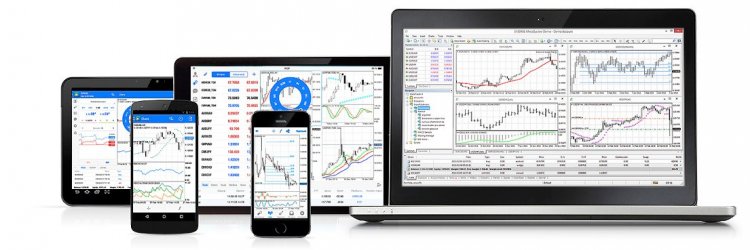Metatreader 4 terminal

Good day, dear readers! Do you want to become professional stock speculators? Today we will take the first steps in the development of the MetaTrader trading terminal, without which operations on the foreign exchange market are simply impossible.
Please be patient and read the material to the end so you don't miss out on anything worthwhile.
How to open deals in the trading terminal?
Earlier in the article "How to start trading on Forex - an instruction for beginners" we have already figured out the process of installing the platform, even learned how to customize charts and make templates.
Do you remember that you need to download MetaTrader on the website of the broker you plan to cooperate with (because otherwise you will not be able to log in, and trading instruments are not always the same)? Fine! Then we turn to direct practice.
The categories of instruments that can be traded in the terminal are available in the "File" - "New Chart" tab.
After clicking, the system displays a list.
You haven't forgotten, what is the difference between major and minor instruments (not far from them are exotic ones that are absent from us, but available on the market)? If you forgot, re-read the first part of the article "Rating of Forex brokers and how to choose the best broker for trading . "
If you do not want to go into the "File", click on the small button in the control panel.
Let's learn how to open deals for a selected currency pair or other instrument. We will practice on USD / JPY (dollar / Japanese yen). The graph (five minutes) looks like this.
The first thing we indicate is the volume. How to calculate it, read in a separate article about leverage and lot . By the way, the volume of trade and the lot are one and the same. This is followed by the Stop Loss and Take Profit levels.
The first order in translation means "Stop losses" - if the price goes against us, then when it reaches the set level, the broker will automatically close the deal. Traders in such cases say: "I caught my Elk." If you do not set a Stop, one unsuccessful trade can turn the entire trading deposit into nothing. Take Profit - on the contrary, fixes income (literal translation - “Take profit”).
There are three ways to install SL and TP. The first is to calculate the required levels and indicate them when opening a trade. Suppose we want to issue such orders.
We will open a test deal for the market decline - “Sell”. If the market really goes down, we will earn, if up, we will lose money. Accordingly, Stop Loss is above the opening price, Take Profit is below. If there was a deal for the growth of the market - "Buy", then Stop would be at the bottom, and Profit - at the top.
So, I have selected the desired levels in the terminal window, it remains to transfer them to the window for opening a new order.
I set the minimum lot - 0.01. Order type - "Immediate execution", we will talk about pending orders below. The type of deal, as already mentioned, is "Sell". Prices on the market are constantly changing, for sure, while we were opening a position, they have already changed. In order not to press again each time, we will set the maximum deviation from the requested price. Let there be, suppose, 3 points.
All preparatory work is now complete. Click Sell and open a deal. An open position is immediately displayed in the terminal.
If you have a question why the minus was highlighted, if the price has not yet really passed the slightest distance, I direct you to the material "What is Forex" .
So, we have successfully opened a trade. Our current profit (alas, negative), trade type, volume, opening price, Stop Loss and Take Profit levels are displayed on the board. There is no commission, since the deals are spread, the swap will be charged only if we move the position overnight.
Now about two other ways of placing Stop and Profit. If we click on the green line (representing the open price) and pull it in the opposite direction to the one at which we opened, we get a Stop Loss.
















